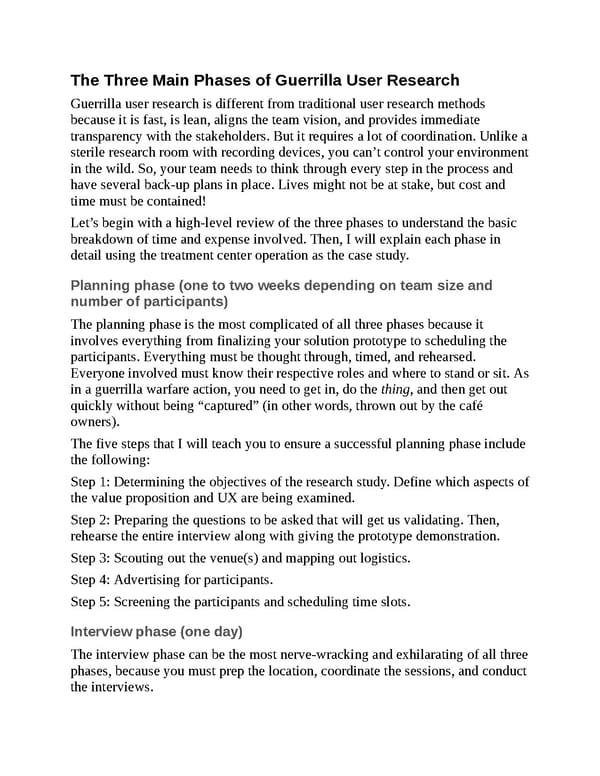The Three Main Phases of Guerrilla User Research Guerrilla user research is different from traditional user research methods because it is fast, is lean, aligns the team vision, and provides immediate transparency with the stakeholders. But it requires a lot of coordination. Unlike a sterile research room with recording devices, you can’t control your environment in the wild. So, your team needs to think through every step in the process and have several back-up plans in place. Lives might not be at stake, but cost and time must be contained! Let’s begin with a high-level review of the three phases to understand the basic breakdown of time and expense involved. Then, I will explain each phase in detail using the treatment center operation as the case study. Planning phase (one to two weeks depending on team size and number of participants) The planning phase is the most complicated of all three phases because it involves everything from finalizing your solution prototype to scheduling the participants. Everything must be thought through, timed, and rehearsed. Everyone involved must know their respective roles and where to stand or sit. As in a guerrilla warfare action, you need to get in, do the thing, and then get out quickly without being “captured” (in other words, thrown out by the café owners). The five steps that I will teach you to ensure a successful planning phase include the following: Step 1: Determining the objectives of the research study. Define which aspects of the value proposition and UX are being examined. Step 2: Preparing the questions to be asked that will get us validating. Then, rehearse the entire interview along with giving the prototype demonstration. Step 3: Scouting out the venue(s) and mapping out logistics. Step 4: Advertising for participants. Step 5: Screening the participants and scheduling time slots. Interview phase (one day) The interview phase can be the most nerve-wracking and exhilarating of all three phases, because you must prep the location, coordinate the sessions, and conduct the interviews.
 UX Strategy: How to Devise Innovative Digital Products that People Want Page 221 Page 223
UX Strategy: How to Devise Innovative Digital Products that People Want Page 221 Page 223